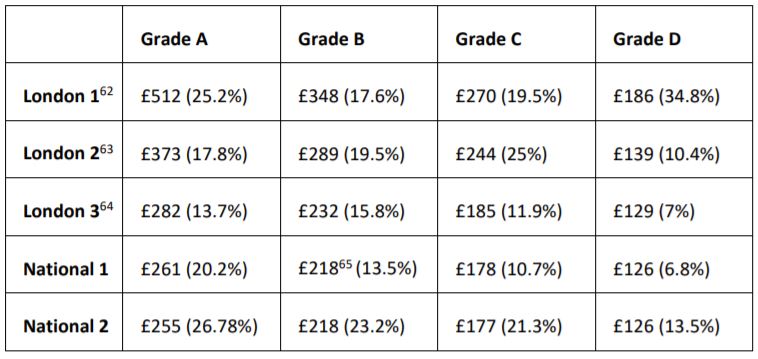
Vos: Necessary update
The Master of the Rolls, Sir Geoffrey Vos, has approved the new guideline hourly rates (GHR) while ordering a further review that will take into account changing working practices.
The intention is for the revised Guide to the Summary Assessment of Costs, drafted by the Civil Justice Council’s GHR working group, to be in force from 1 October 2021.
In its final report at the end of last month, the working group, chaired by Mr Justice Stewart, made no significant changes to the interim recommendations it issued in January, which called for “modest” increases in the GHR, ranging from 7% to 35% (see the figures below).
The other key changes include amending the London 1 and London 2 rates to reflect the work done, rather than whether or not firms were in the City, making London 1 primarily be for very heavy commercial and corporate work and London 2 for all other work.
The National 2 and 3 bands will be merged into a single band and those parts of the country not currently allocated to a band will be put into one.
Sir Geoffrey said: “The published guideline rates have been static for too long and this needed to be addressed. I am satisfied with the evidence and arguments set out by the working group.
“I plan to implement all the recommended changes from Friday 1 October 2021 and to that effect I have asked my officials and Master Gordon-Saker, Senior Costs Judge, to take forward the publication of the revised guide to summary assessment.”
The judge said he had received correspondence about likely changes to working practices following the pandemic and the impact on the GHR.
“Whilst I think there is likely to be merit in their concerns, I do not think that this should delay the necessary update of what is ultimately an advisory guide.
“I have, however, agreed with the Civil Justice Council that there will be a further review of guideline hourly rates reporting within two years.”
The CJC working group said it sought to follow “the traditional basis of the GHRs” and that it was not making more radical recommendations given the likelihood that a deeper review would soon be required.
The January report noted how court modernisation programme and Covid-19 were likely “fundamentally to affect the way in which the legal profession provides its services”, meaning a further review would be needed, possibly within three years.
Claire Green, chair of the Association of Costs Lawyers, said: “It is unarguable that the GHRs need to be increased after an 11-year freeze, so it is welcome news that the Master of the Rolls is intent on getting them implemented so soon.
“I am also heartened that there won’t be an another 11 year wait until the next review, with the Master indicating a further review in two years’ time.
“As a result of the review, we are particularly pleased that qualified costs lawyers are now eligible for payment at grades B or C depending on the complexity of the work done – rather than allowing no higher than grade D – along with the recognition that it may in the future be appropriate to align costs lawyers with solicitors and legal executives across all grades. This is good news for costs lawyers.”
The GHRs have not been changed since 2010. Following a report by a group headed by Lord Justice Foskett, in 2015 the then Master of the Rolls, Lord Dyson, froze the rates indefinitely after deciding there was no prospect of the evidence required to change them being produced.















Leave a Comment